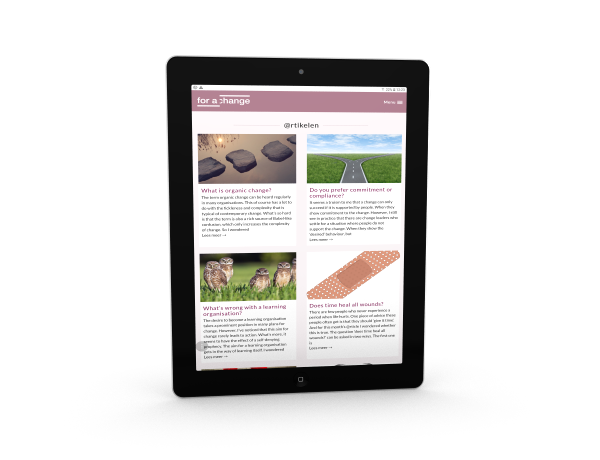I have two guests. A white one and a flecked one.
They are residing in a small hutch. I can’t bear to see it. I go to the DIY store and buy a folding rabbit-run. I assemble it, attach it to the hutch and open the small hutch door.
Nothing happens.
Every now and then they take a look outside. But they refuse to come out.
Sometimes it’s just the same with employees
You give them space but they do nothing with it. Despite your invitation, they remain on their familiar spot. They keep the shop ticking over but they leave any renovations to someone else. To you or other colleagues.
And that is a problem.
As taking up space is essential
An employee who doesn’t use this opportunity automatically relegates it to others. He allows the agents of change to decide the form his work will ultimately take. Due to the fact that these colleagues are unable to oversee his work to the same degree, the chance of poorly made decisions becomes a strong possibility.
This causes resistance. The employee ignores the change or takes part just for show.
The transition has failed and the employee has another reason to retreat to his own comfort zone.
How can we ensure that employees utilize this given space?
It can be of your own doing. If you are continually active and the other person remains passive then you can get stuck in a pattern. It then becomes your challenge to change this.
There are three possible scenarios going on here.
1. You give precedence to speed rather than involvement
During conversation regarding upcoming changes with an employee you provide answers, advice and instruction. Otherwise this dialogue would cost too much time. And you don’t have time to spare. Whereas when you ask him questions you trigger engagement.
2. You give content priority over ownership
When you’ve asked an employee a question, you engage in discussion with regard to their answer. Because you believe his answer needs improvement. However proceeding with his responses has a far more enhanced effect.
3. You prioritize ‘top down’ over ‘bottom-up’
You are predominantly concerned with changes which come from the top. Because there are so many of them. And because of the pressure exerted from above to execute these changes. However you would be wiser to respond to issues which are bothering the employee.
In the meantime the rabbits haven’t moved an inch…
However I have a plan B. I’ve put their feeding bowl outside the hutch.
Still no movement.
Come on guys, I’m thinking, I’ve not bought this run for nothing. Just as I am in the process of stepping over the fence to lift the rabbits out of the hutch, my son walks in. He assesses the situation as says “Mum, they too scared to climb over the edge. Come on, let’s make a step for them”.
And off they went.
So?
Providing employees with space is important. Don’t accept it when they don’t take up the opportunity offered. Ask questions. Proceed with their answers. Act on issues that bother them.
If that doesn’t work, it serves no purpose to become irritated. It just means you don’t yet understand what’s really going on.
I’m Annemarie Mars: speaker, author and advisor on change.
It is my job to get people thinking about the way they give room, direction and guidance to organizations in motion. So that they can look for the essential conversation to change together.
Want to know more about my presentations? Click here.


